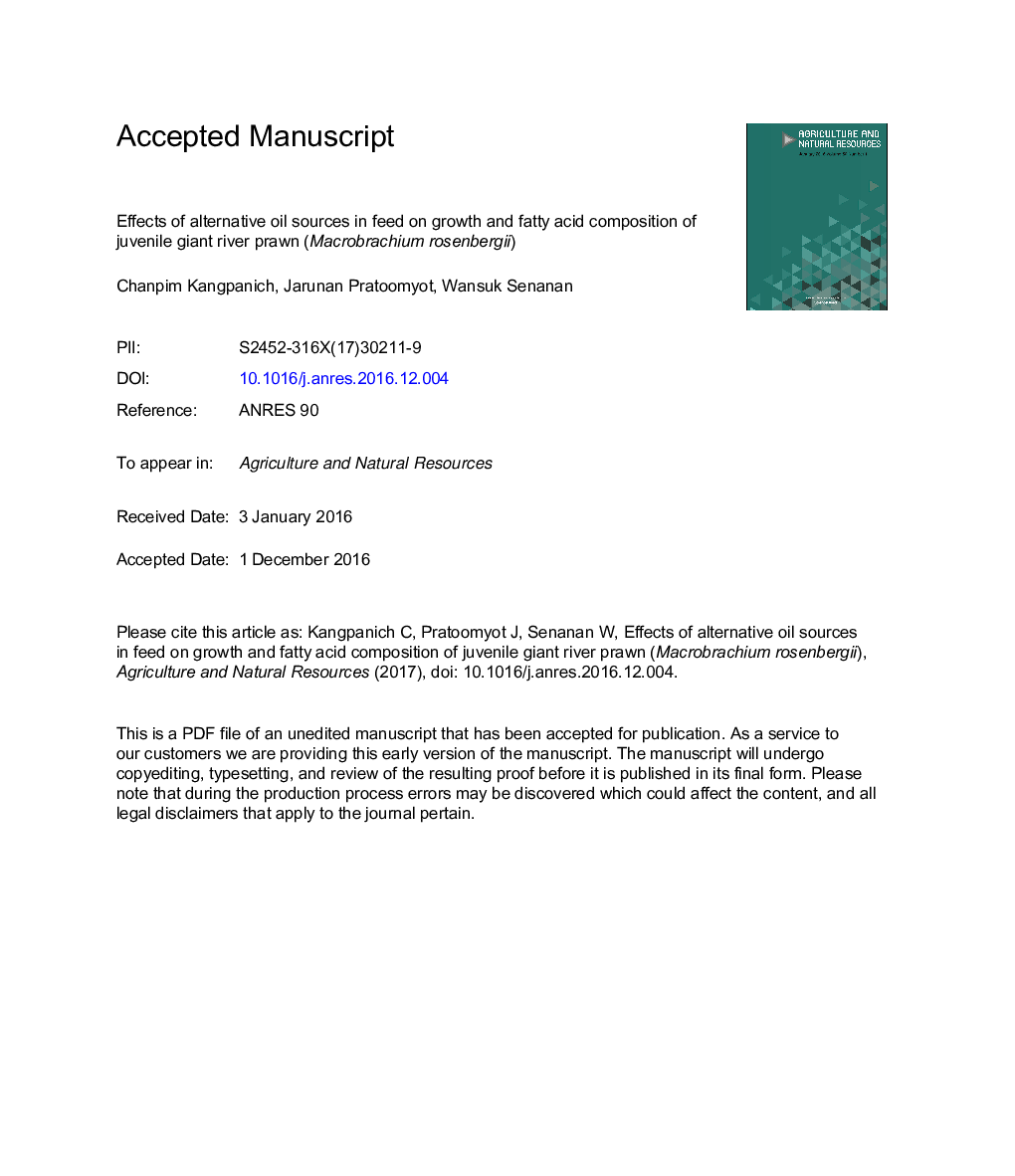| Article ID | Journal | Published Year | Pages | File Type |
|---|---|---|---|---|
| 6538101 | Agriculture and Natural Resources | 2017 | 20 Pages |
Abstract
To relieve the pressure on the future use of fish oil (FO), alternative oil sources need to be explored. Alternative oil sources were evaluated-Schizochytrium sp. (SZ) and soybean oil (SO)-on the growth performance and flesh quality of juvenile river prawn, Macrobrachium rosenbergii. Five experimental diets differed in the types of oil used (oil comprised 3% of dietary ingredients): 3% FO, 1% SZ + 2% SO, 1.5% SZ + 1.5% SO, 2% SZ +1% SO and 3% SZ. After 60 d of the experiment, the survival rates of prawns fed non-FO diets did not significantly (p > 0.05) differ from those fed the FO diet (77.82 ± 4.45-93.38 ± 0.00%). Moreover, prawns fed diets containing both SZ and SO had significantly (p < 0.05) better growth performance than those fed a single oil source. Prawns fed 2% SZ+1% SO showed the best final weight, percentage weight gain, absolute daily weight gain, specific growth rate and feed conversion ratio (p < 0.05) while those fed 1.5% SZ +1.5% SO or 3% SZ had the highest survival. Tissues of prawns fed the non-FO diets contained higher amounts of nâ6 polyunsaturated fatty acid (PUFA) but were lower in nâ3 long-chain PUFAs (eicosapentaenoic acid and docosahexaenoic acid) than those fed the FO diet. Among the non-FO groups, prawns fed 3% SZ had the most similar flesh fatty acid profile to those fed 3% FO. Substitution of FO with combinations of SZ and SO significantly improved growth performance and feed utilization. The study recommended diets containing 2% SZ + 1% SO or 1.5% SZ + 1.5% SO for M. rosenbergii juveniles.
Related Topics
Life Sciences
Agricultural and Biological Sciences
Forestry
Authors
Chanpim Kangpanich, Jarunan Pratoomyot, Wansuk Senanan,
